The second behavior of Lion-tailed macaques
During their usual patrolling, a female climbed on the top of a house with the help of a pillar, just like how it takes the support of a trunk to climb the tree, and gently pulled a banana from the tree grown in the house and plodded a few steps further to park itself on the edge of a roof and started to peel aggressively. I wonder taking the fruit to a designated location and relishing is a customary thing in macaques. This pattern was observed many times of different age groups. Then came another one with an infant, who was curiously looking outside world as usual, on its belly inspected each banana with its hands for a ripe one and within no time removed one of its favourite and started to peel, but this one doing gently. The entire scenario looked as if it is a habit that they are born with.
As the number of monkeys on the terrace started to grow a person from inside the house, where the banana tree was grown, came out and tried to shoo them away. Twice. They fled from there by jumping from terrace of one house to another. Korangu! he said smiling. Over the course of many days I had observed many incidents like these where monkeys were fond of human made food.
One incident where a bunch of lion-tailed macaques along with few Bonnet macaques were marching towards a hotel. They tried to enter through a door that was opened by jumping from a railing and again, a guy from inside the room came into the balcony and shooed them away with a broomstick. Unsurprisingly the lion-tailed macaques ran away instantly while the Bonnets stayed for some more time trying their luck to get in before they followed their friends.
While those were the scenes from the top of buildings, it was relatively more unpleasant scenario when they are on the ground, strolling on the road. Another small sub-group of macaques from the same troop as earlier went after the garbage dump that was kept on the side of the road. They started to throw and tear packets in search of food. It was more uncomfortable with the sight of an infant while its mother was busy in searching.
One evening while I was walking in the market a women started to tell the story about how monkeys come and take away the corn that she sells and while she was narrating the incident happened few days ago, a male from no where came swiftly, grabbed corn from the ground with two hands and jumped the wall and no where to be seen later for sometime. Perhaps relishing the snack behind the wall. The woman tapped on her forehead and started to laugh, unsure what else to do I reckon. For sure it is not a healthy incident for her.
Out of all occasions I had witnessed in the next few days in this beautiful small town called Valparai, the incident which surprised me and which I was not expecting too soon to happen was, when an adult male casually walking on the road ahead of its troop suddenly started to sprint and with few hops it straight away darted inside the corridor of a homestay making an effort to open a big garbage bin. While it was struggling to open the lid, a person from inside came out and like many tried to waved his hand to drive away the monkey. His voice was at a normal pitch initially but this one looks like a stubborn monkey who initially refused to move and instead gave an aggressive expression with its hands raised and chest wide open, just for a second and again focused on opening the lid. The guy waved his hand again but this time raised his voice few decibels higher, it is only then the monkey went away jumping on few buildings to sit on a corner of a terrace for a while before moving in the other direction.
So why are they behaving like this? The obvious answer, without much speculation is, they need food. It does not matter from where they find, it could be growing on a tree, it might well be coming from the hands of humans on the road, in the house of humans', or lying on the ground, it just does not matter to them as long as their stomachs are filled. As simple as that. But they have been living with the humans in this region for a long time and they were invading into the houses from a long time so why this has been an absolute pivotal subject to discuss now? Because although their natural food did not decrease significantly over time, the alternatives have become more accessible exponentially in recent times which they found nutritious (and more delicious) perhaps.
The accessibility of the "alternate food" is mainly from the garbage, so why there is a garbage out there in first place? Because they are thrown majorly by tourists and in other locations by residents because this is what convenient for them. And hence, what was once available in limited quantities in certain places, is now ubiquitous. As a result the boundaries of these monkeys started to grow slowly. So as the population of the town, so as tourists so as garbage. There are various reasons on why tourists do what they do but this is common pattern across many locations in the country. We also know that this pattern can be broken and a new pattern can emerge, not throwing garbage where they wander. The monkeys of course do not know but it is only we humans know that there are side effects from this new behaviour, not just to these monkeys but to the people coming in contact with them as well. We very well know that there is a high chance of transferring virus or diseases from them. Stealing a well prepared food from their homes or grown bananas is another added mental agony to the people in the town.
So here is where I am hypothesising situation that, what if there is no garbage in their vicinity? Let's say a few kind souls in an organisation (either the forest department or local municipality) have decided to clean them up not just on the side of the roads but also keeping the dump yard tidy. And because people in the town care about these monkeys and let's say they have been educated not to feed them and all roof tops of their homes are covered with asbestos (NCF is doing an amazing work on this). What this means is majority of their sources for human made food have been blocked. I understand this is not as simple as I write, its quite complicated and ambitious project.
And because in my previous observations in Puthuthottam where these monkeys started to play with each other and doing their business as usual when the garbage in their trail was cleaned. As a result these monkeys, as I am guessing, will repeat this behavior again if the consistently see their environment tidy. This would be the most satisfying scene for everyone. Of course they will still have access to fruits such as bananas from the houses as seen in the above case but searching for them might be less frequent. That would perhaps leave one last problem, the sympathetic tourists who graciously feed these monkeys. Educating them is a challenging task indeed but if care is taken to make sure these feeding is stopped then it would be interesting to see what their behaviour would be from then on.
Most likely they need to go back to feeding on their natural food which should be increased. On the other hand I am not sure if the plants mentioned in this article are native ones but in the good faith if I assume that they are then these monkeys will have handful of options as there will be a connectivity for them to move from one location to the other for food. It will take decades for these trees to grow as adults and produce fruits for monkeys are other frugivorous.
While all these are happening on one end, the evolution will also play its role. The population of these monkeys will increase. It will take its own time. It looks like the forest department has other plans such as moving them to other location , deep inside the forest. I am not sure what will be the implications to them even though habitat on paper is suits them. But that to me does not solve the root of the problem as the remaining monkeys in the town still get their hands on the left overs on the road side and around houses. And not just them but other mammals roaming in the region such as Sambar deer and leopard might get attracted to the food inside those garbage bins.
After observing work from NCF and talking to scientists working for them I am optimistic about the future of Lion-tailed macaques in this region and their co-existence with people. It will take time. Meanwhile its going to be important they do not deviate too from their natural behaviour just like the small one on the belly did not step out of its safe haven for the garbage because it does not need. It could get attracted though to the food once it starts to find them in vicinity more frequently.
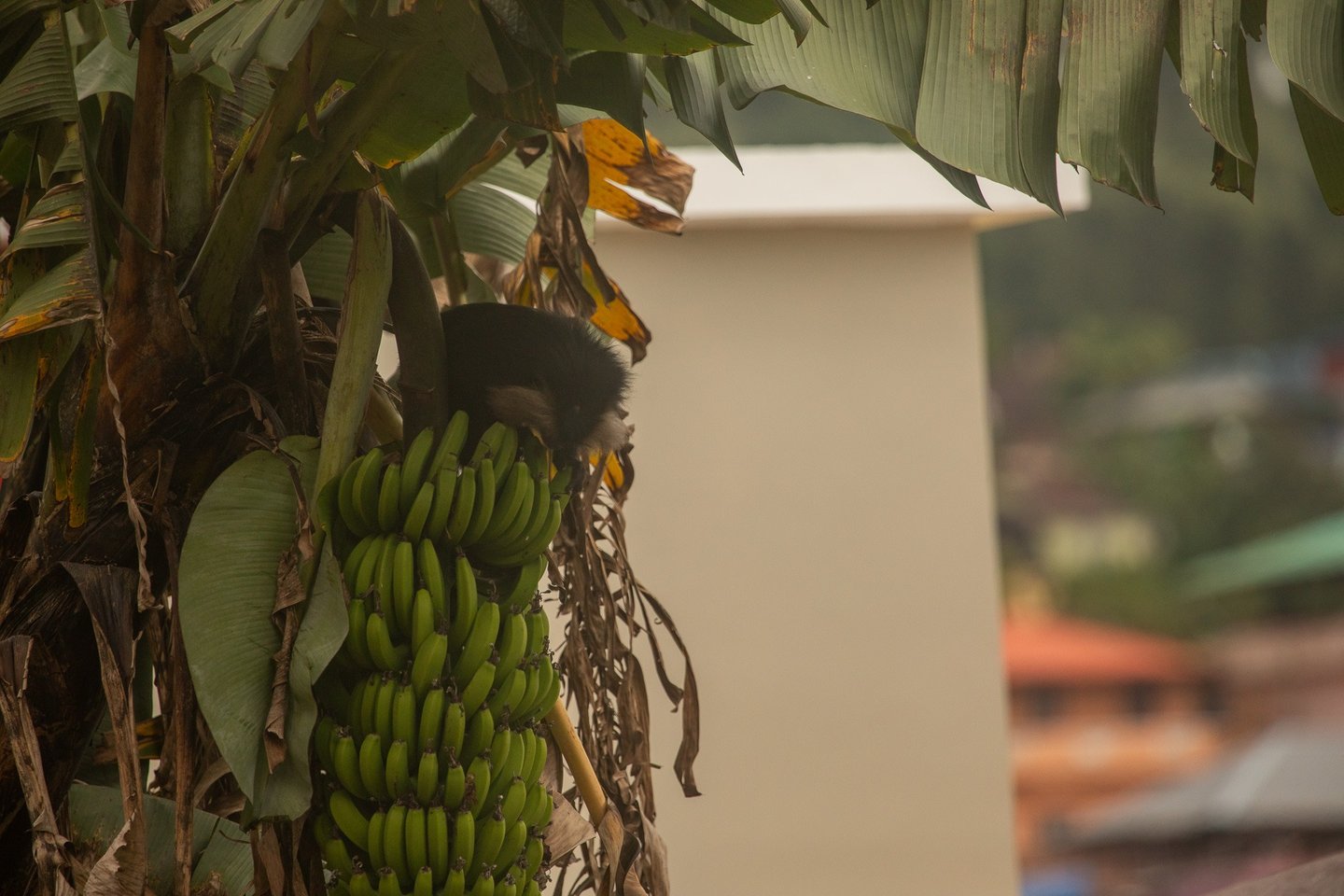

A lion-tailed macaque grabbing a banana of her choice from a house.
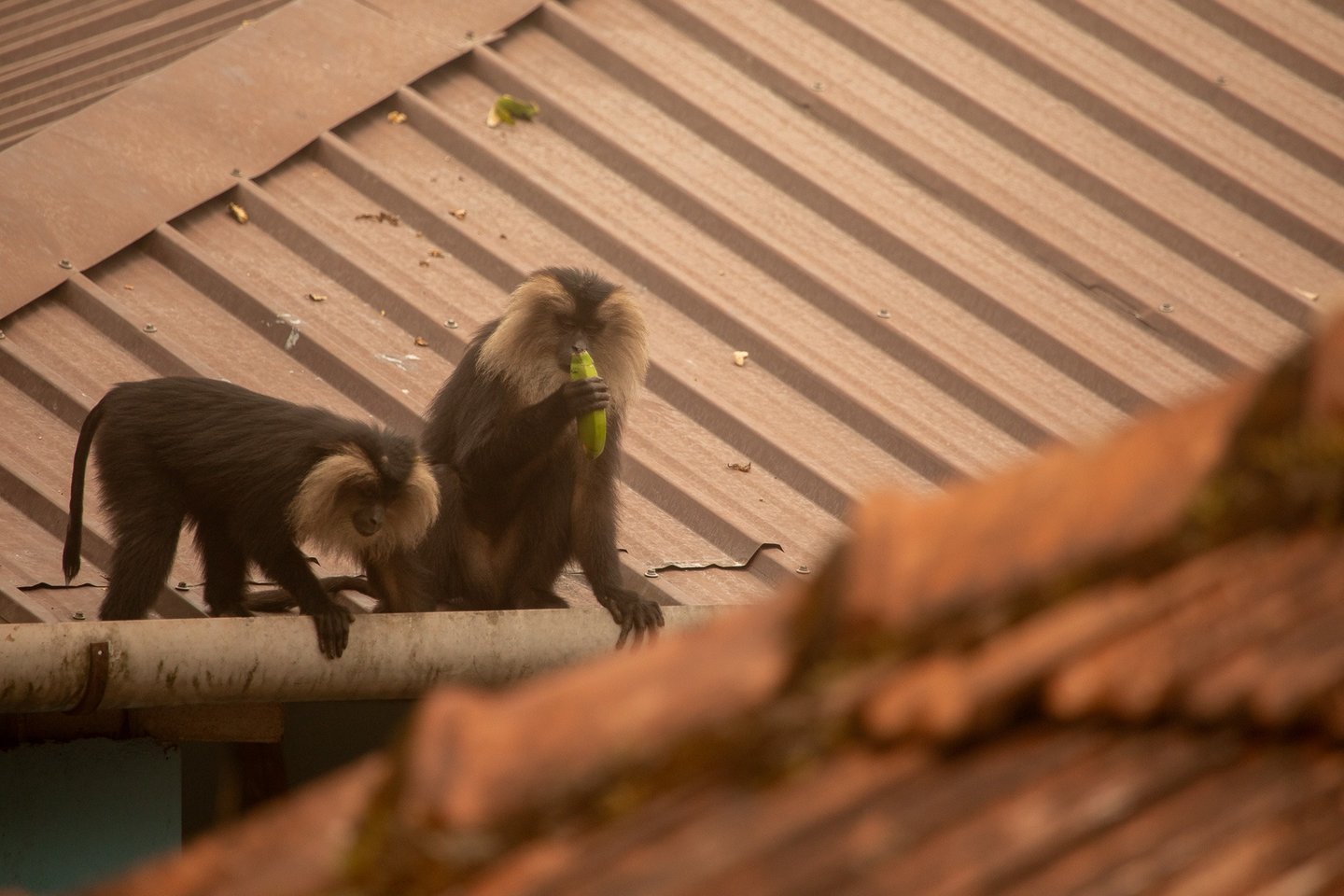

More monkeys started to join the female, who already found a secluded place to enjoy her snack.

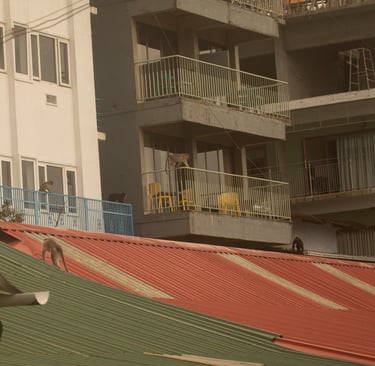
Lion-tailed macaques were joined by Bonnet macaques trying to enter a hotel to check if they can get some food. Few years ago there was only one Bonnet macaque with the LTM's troop, now there are four.
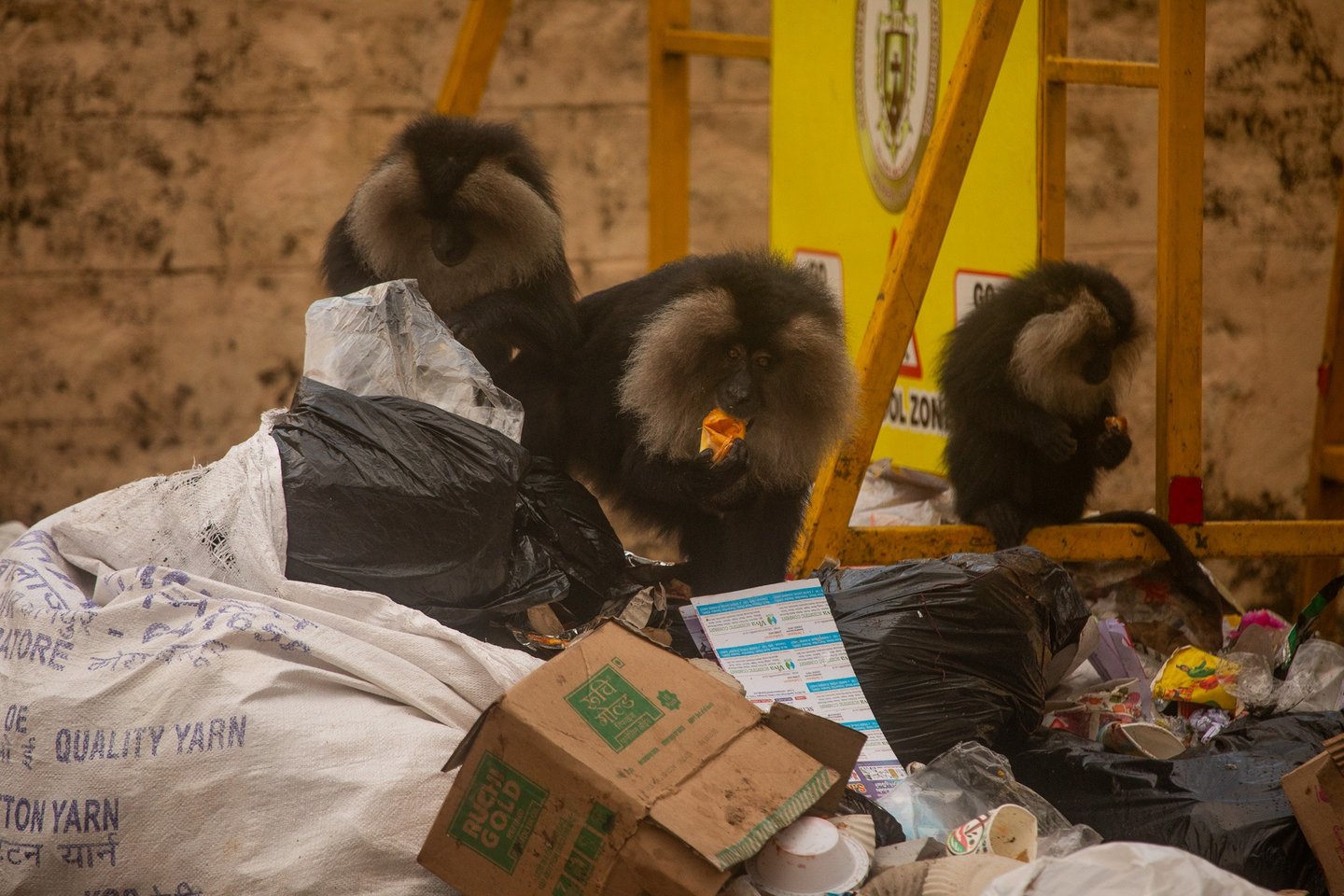

A bunch of Lion-tailed macaques trying to find some food from a garbage dump. One of them was carrying an infant on her belly
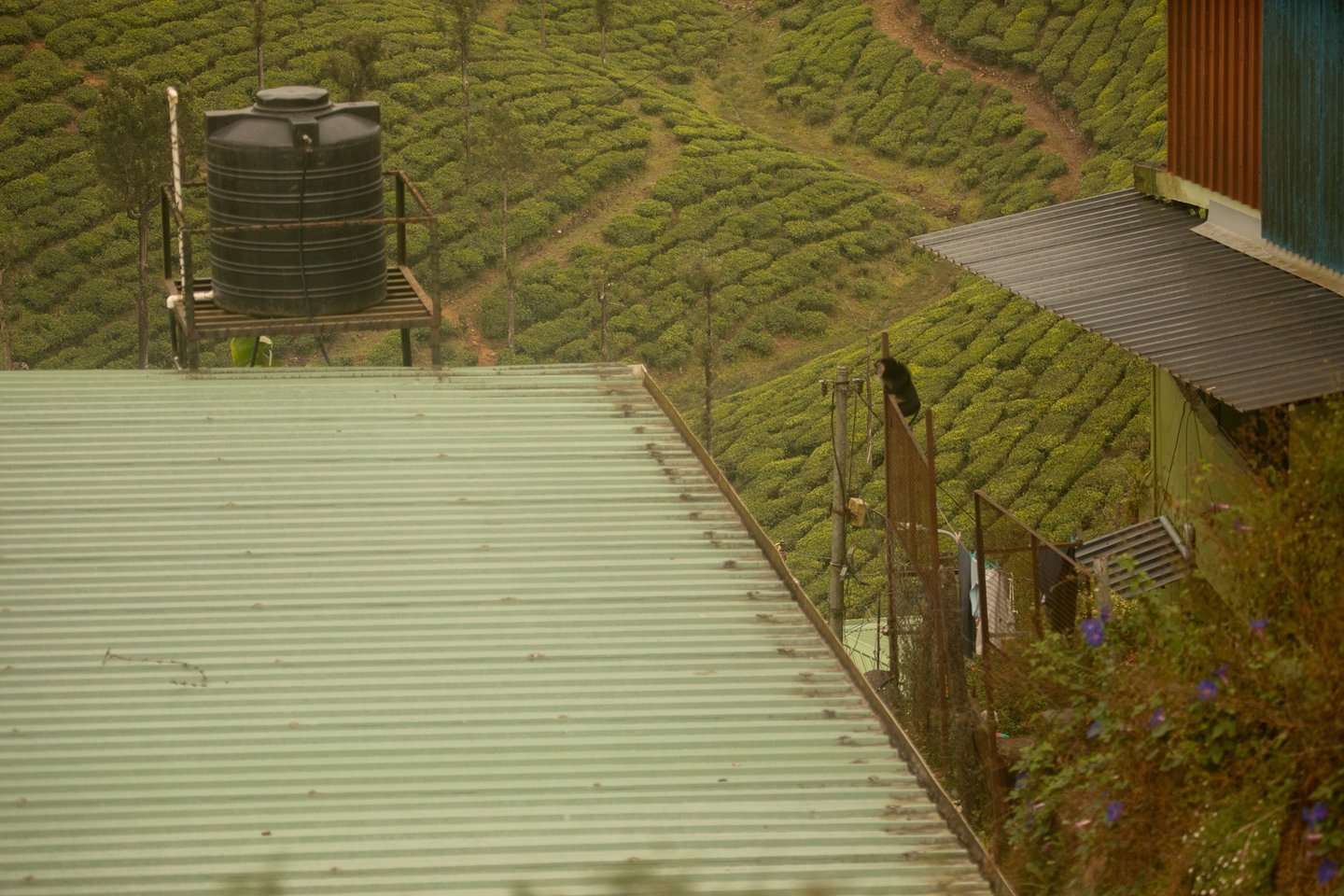

Once it could not get the food from the bin, it landed outside seeking to join the remaining monkeys in its troop.
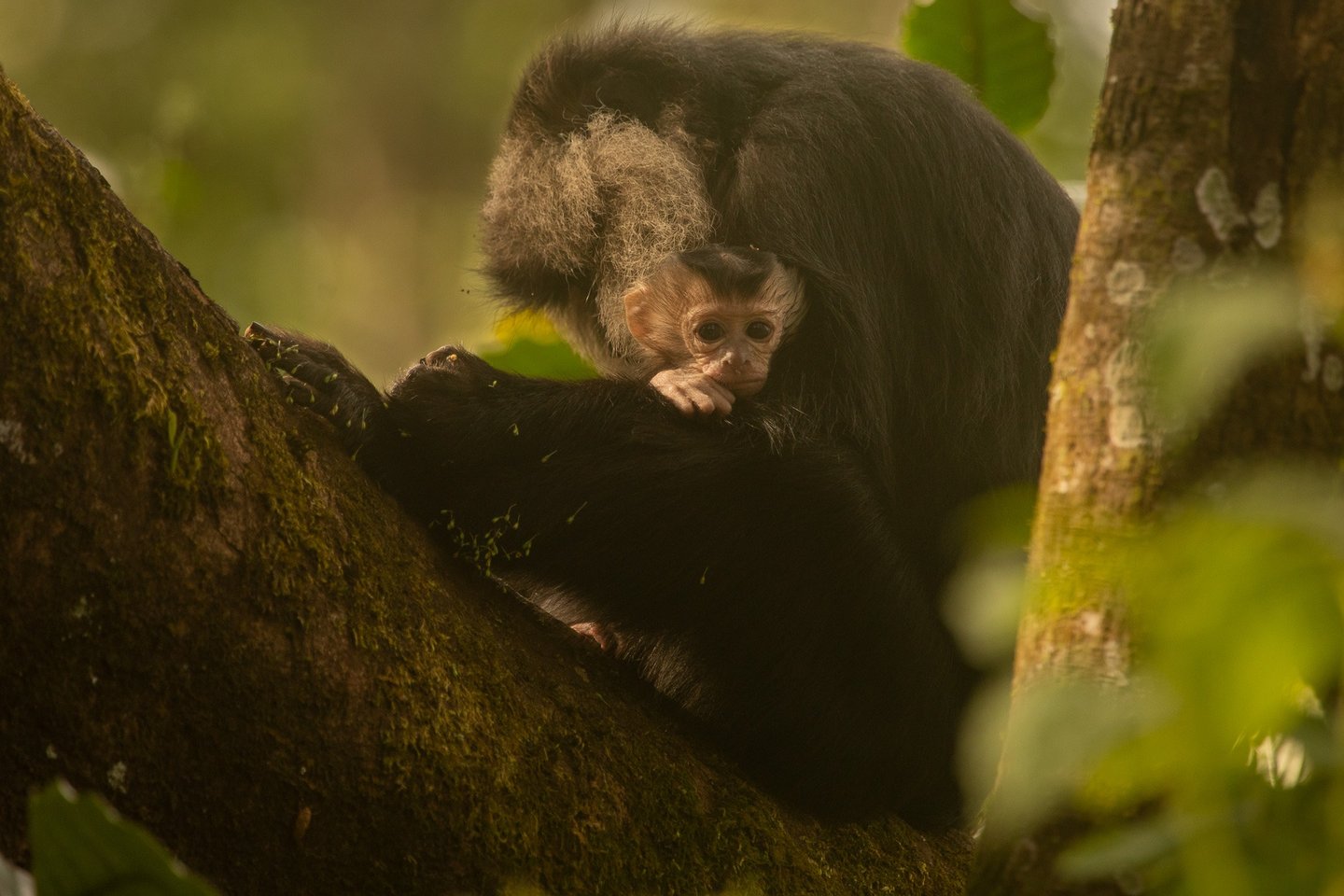

A curiously looking infant
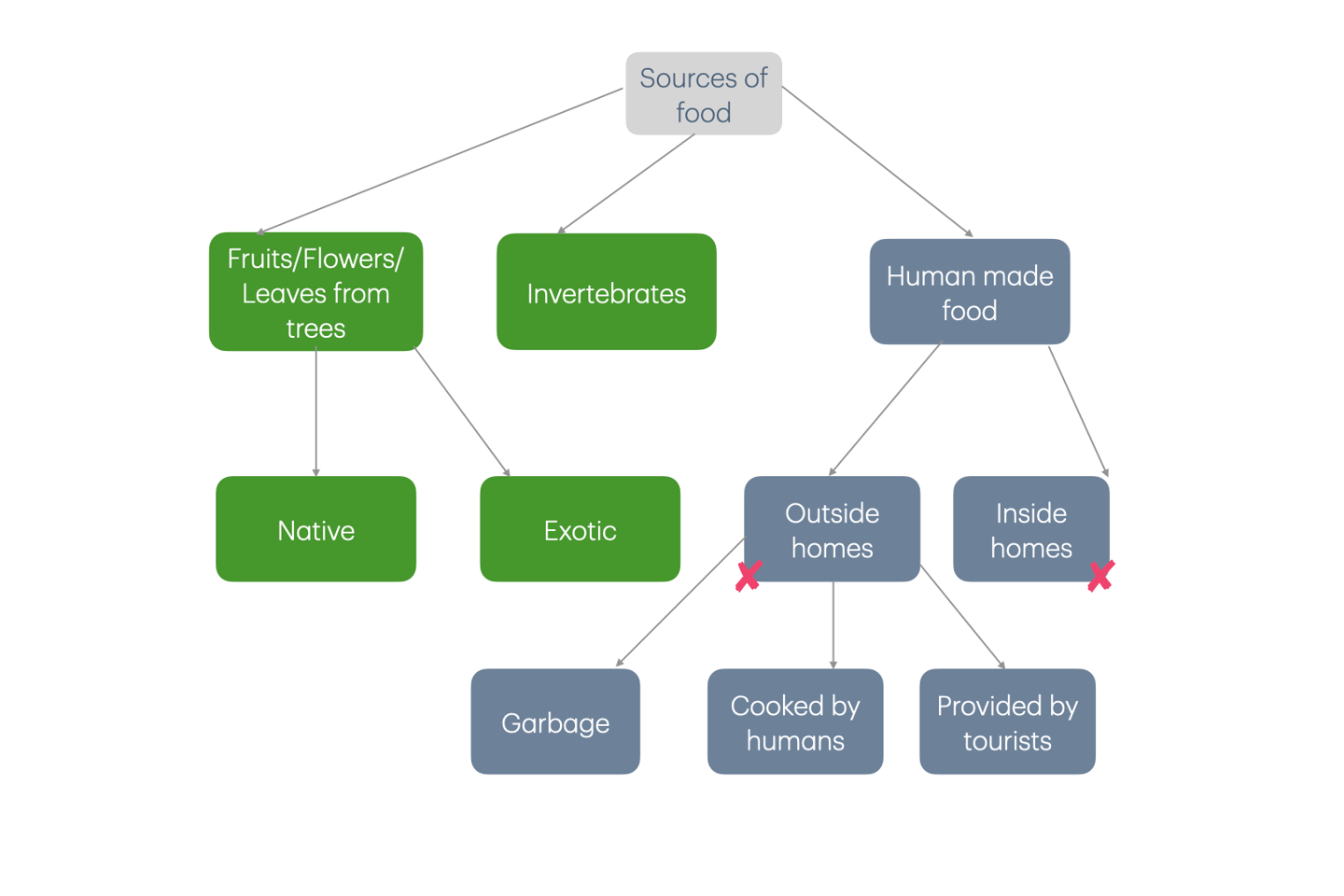

A representation of various sources of food that LTMs can get. A red cross indicates the source which potentially can be stopped getting them access to.
